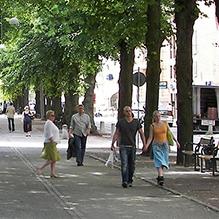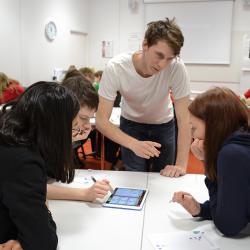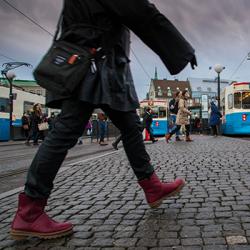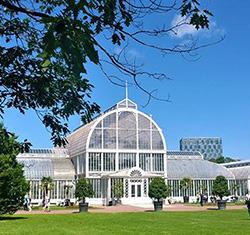A story of what came next
Less traffic and more public transport
Public transport in the Gothenburg region should increase to 40 percent by 2025. A co-production project within Mistra Urban Futures has played an important role in achieving this goal.
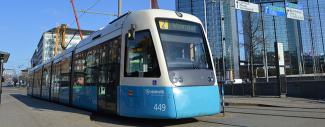
The research project Well-being in Sustainable Cities - shortened WISE - analyzed how people are affected by a transition into a sustainable society. It was soon concluded that reduced car traffic is needed for residents to be able to enjoy the future Gothenburg.
"It was about seeing if the calculation models, analysis tools, decision-making processes and systems in traffic planning support a sustainable transport system."
Part of the project evaluated if the decisions taken today are really based on models that are created to achieve a sustainable traffic development.
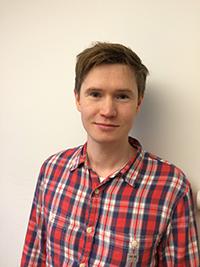
– It was about seeing if the calculation models, analysis tools, decision-making processes and systems in traffic planning support a sustainable transport system. It is based on assumptions and political goals that the system needs to be transformed to tackle climate change and other sustainable goals for the city, says project manager Alexander Hellervik, who works with national strategic planning at the Swedish Transport Administration.
Newly developed model - effect of WISE
A contradiction became clear. The subproject concluded that decision-making models often are based on an increased traffic. The forecasts therefore do not go hand in hand with the goals of a future with low carbon dioxide emissions. If the assumption is that car traffic is increasing, there is a risk of being slave under the forecast instead of working towards another goal.
An alternative is that instead of acting on the basis of what you think will happen you can actively influence the future with concrete measures. This insight resulted in an adaptation of "Sampers", the regional traffic analysis model used by the Swedish Transport Administration. A study was conducted in Sampers to highlight the effects on car traffic and investigate why decision models are constantly based on forecast of increased traffic. Would it be possible to adpat the forecast tool so that an increase is not foreseen? Is it possible to include a scenario for the K2020 goal, which means that 40% of the private journeys in the Gothenburg region should be taken by public transport in 2025?
- We saw was that it worked very well to put this into the forecast system and that the tools and processes that exist can work. It's more about how they are used and how we, together with political decisions, can get reduced car traffic," says Alexander Hellervik.
"It has been tested out for real when planning and developing new analyzes for the future public transport system. It has come to practical use."
The forecast within the Sampers tool now instead shows a general reduction in car traffic on the overall road network compared to today. It is a direct effect of the WISE project.
- It has been tested out for real when planning and developing new analyzes for the future public transport system. It has come to practical use. The WISE project gave us new knowledge, says Alexander Hellervik.
The model is intended to be used as a tool in long-term transport and infrastructure planning – and in the long term, increase public transport.
Ripples on the water
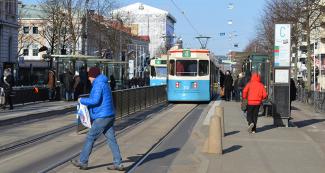
"The decision-making sub-project was a pioneer when it comes to goal-oriented planning."
Nina Galligani Vardheim, a specialist at the Traffic and Public Transport Authority in Gothenburg, as a project member of WISE, emphasizes that the project has also been important for future development work.
- The decision-making sub-project was a pioneer when it comes to goal-oriented planning. In addition to the fact that the project itself was very instructive, the methodology developed within the project has been very useful to us, she says.
The WISE project has brought new thinking to the Traffic and Public Transport Authority.
- In the City of Gothenburg, we use the methodology to describe a future scenario when the city's traffic strategy is implemented, that is, a scenario where car traffic has been reduced in favor of public transport, walking and cycling," says Nina Galligani Vardheim.
- The scenario for traffic is used in the city's planning work, for example in detailed plans and infrastructure measures. The methodology has also been used in other ways to describe future public transport travels in Gothenburg, Mölndal and Partille.
Clearly, WISE in general and the sub-project Decision Models for Executing Sustainable Transitions in the Transport Sector in particular opened up new doors. Among other things, this is the basis of the ongoing project Guiding Urban Transitions for Sustainability.
- There are major changes needed to achieve sustainable urban systems, says Alexander Hellervik. Now, we look more specifically at processes that support transition. We are looking at the parking question, what conditions are available for choosing other ways to travel and what planning tools are available that can make the K2020 possible.
Project facts
Project title: WISE - Well-being in Sustainable Cities - Decision Models for Executing Sustainable Transitions in the Transport Sector
Partners: Trafikverket, The Swedish Transport Administration, Region Västra Götaland, City of Gothenburg and Chalmers University of Technology
Project period: May 2012 - December 2015
